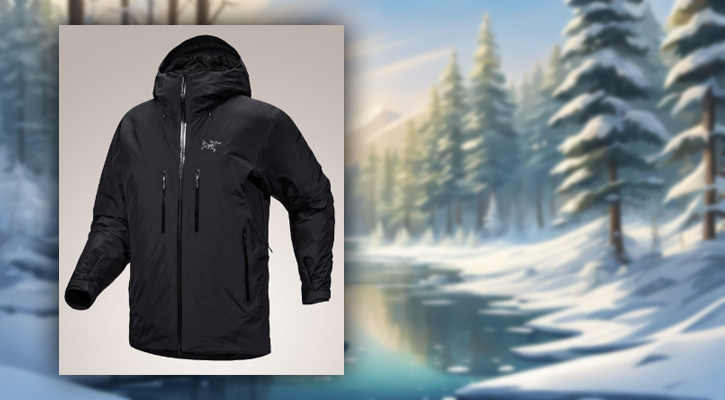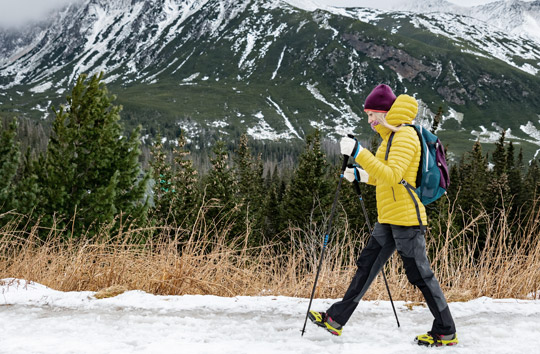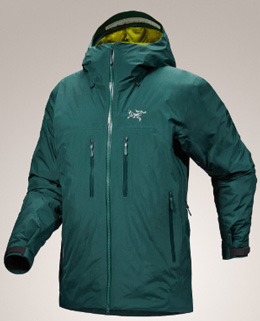
Hiking jackets often come with a high price tag, leaving many outdoor enthusiasts wondering if they should invest in a quality jacket.
One fundamental aspect driving the expense is the technology and materials required to make them both lightweight and durable. While you might occasionally find budget options, they may not provide the same level of protection against the elements.
Another contributing factor is the research and development behind creating jackets that host a range of features tailored to various weather conditions and terrains. Innovations for waterproofing, breathability, and comfort can significantly increase production costs, which are reflected in the retail price.
Also, the outdoor clothing market is aimed at enthusiasts who are willing to invest in high-quality gear for better performance and safety, which influences the pricing strategy.
Let’s explore these reasons in more detail!
1. Why Are Hiking Jackets Expensive?
Hiking jackets are designed to withstand extreme weather and harsh outdoor conditions. The high cost is often a reflection of the advanced materials and features incorporated into their design.
- Materials: Your jacket likely includes waterproof, windproof, and breathable fabrics. These textiles are engineered for performance and durability, which can be costly to produce. For example, Gore-Tex®, a common material in high-end jackets, is renowned for its ability to repel water while allowing vapor to pass through, keeping you dry from both external moisture and perspiration.
- Construction: The construction of a hiking jacket involves meticulous design and labor to create seamless or reinforced stitching, waterproof zippers, and ergonomic fits. This process can significantly add to the production costs.
- Technology: Many hiking jackets come with built-in tech, like UV protection, reflectivity for safety, or advanced insulation that can adapt to your body temperature.
- Brand and Marketing: The pricing includes brand value, research and development costs, as well as marketing and distribution expenses. Recognized brands (The North Face, Arc’teryx) often charge a premium due to their established reputation for quality and reliability.
- Sustainability: As consumers become more environmentally conscious, more brands are investing in sustainable practices, which can lead to higher prices. This may include the use of recycled materials or ethical manufacturing processes.
When purchasing a hiking jacket, you’re paying for a garment that can potentially last for many seasons, providing you with comfort, protection, and functionality on your outdoor adventures.
Don’t miss: 9 Most Expensive Hiking Brands for Clothing and Footwear

2. Materials and Construction
When you invest in a hiking jacket, you’re paying for high-quality materials and expert construction that provide unparalleled durability and protection against the elements.
Advanced Fabrics and Technologies
Modern hiking jackets often feature advanced fabrics such as Gore-Tex, which is celebrated for its waterproof, windproof, and breathable qualities. Gore-Tex consists of an ultra-thin membrane with over 9 billion pores per square inch. This membrane is bonded between high-performance lining and outer textiles.
Another cutting-edge material is the natural down used in insulated jackets, providing an exceptional warmth-to-weight ratio. Here’s a breakdown of their roles:
- Gore-Tex: Ensures water resistance while allowing vapor to escape, keeping you dry and comfortable.
- Goose and Duck Down: Traps heat efficiently for insulation, especially in colder climates.
Durability and Performance Features
Your hiking jacket’s durability is directly tied to the use of durable materials in its construction. These materials are tailored to withstand harsh weather and rugged terrain. For instance:
- Ripstop Nylon: A common outer layer that resists tearing and improves longevity.
- Seam Taping: Ensures the jacket remains waterproof at the stitches.
Hiking jackets are also engineered with performance features to enhance your experience. They include reinforced areas that are prone to abrasion and multiple pockets for functionality.
Additionally, features such as underarm zippers add breathability without compromising waterproofing. Carefully integrating these features requires precise construction techniques, contributing to the jacket’s cost.
3. Branding and Market Positioning
When you invest in a hiking jacket from a renowned brand, you’re paying for the trusted reputation and the backing of substantial research. Brands like Patagonia, Arc’teryx, and The North Face have positioned themselves as premium options in the market.

Arc’teryx Men’s Beta Down Insulated Jacket – costs around $1,000
Image: arcteryx.com
Reputation and Consumer Trust
Your trust in a brand like Patagonia grows with its reputation for quality. Patagonia’s commitment to environmental sustainability also adds to its premium positioning. For example, Arc’teryx jackets’ reputation for durability means you trust them in extreme conditions, justifying the higher price. Similarly, The North Face has built a strong rapport with outdoor enthusiasts, which commands a higher price due to the implied trust in their products.
- Brand Loyalty: Consumers often associate higher prices with higher quality.
- Patagonia: Known for environmental responsibility.
- Arc’teryx: Synonymous with durability.
- The North Face: Recognized for reliable outdoor gear.
Innovation and Research Investment
Investment in innovation and research contributes significantly to the cost. Rab excels with innovative materials, leading to a superior product that can demand a higher price point.
Brands allocate substantial funds to develop new technologies that enhance jacket performance. This continuous improvement loop requires significant financial investment, reflected in the final product’s pricing.
- Research Expenditure Examples:
- Rab: Invests in advanced fabric technologies.
- Patagonia: Pioneers in eco-friendly materials.
- Arc’teryx: Focuses on ergonomic design and proprietary technology.
- The North Face: Develops unique breathable and waterproof membranes (DryVent, Futurelight).
Learn more:
Why is The North Face so Expensive and Popular? Are its Jackets Worth It?
Why is Arc’teryx so Expensive? Is It Worth It?
4. Functionality and Versatility
When you invest in a hiking jacket, you’re paying for a piece of gear that’s designed to tackle a variety of outdoor activities while providing comfort, protection, and adaptability. These garments combine advanced features to meet your functional needs in diverse environments.
Design for Diverse Outdoor Activities
Hiking jackets are tailored to support a wide range of motion and are often equipped with features like reinforced seams, adjustable hoods, and pockets precisely positioned for accessibility. They are engineered to balance durability and lightweight construction, ensuring you can move freely without extra bulk, whether you’re scaling a mountain or trekking through forests.
- Reinforced seams and materials: Provides enhanced durability.
- Strategic pocket placement: Ensures easy access to essentials.
Weather Adaptability
The versatility of hiking jackets shines in their ability to adapt to changing weather conditions, offering layered protection and sustainability over time. Materials like Gore-Tex and waterproof breathable membranes keep you dry from rain or snow, while adjustable features like vents and removable linings help regulate your temperature.
- Waterproof materials (for example, Gore-Tex):
- Keep you dry.
- Allow moisture from your body to escape.
- Adjustable components: Optimize comfort and climate control.
| Feature | Benefit |
|---|---|
| Vents and zippered areas | Increase airflow during strenuous hikes. |
| Removable linings | Offer modularity for warmth and cooling. |
By addressing your needs for comfort and protection, hiking jackets serve as an indispensable tool for enjoying the great outdoors. They are crafted to endure various scenarios, emphasizing functionality and versatility as core components of their design.
5. Should You Invest?
When choosing to invest in a hiking jacket, you weigh the initial cost against long-term utility and ethical considerations.
Long-Term Value vs Price
Investing in a high-quality hiking jacket can be more cost-effective over time. Considering the longevity of a well-made jacket, its cost per use decreases as you wear it for numerous outings.
Premium jackets often come with durable materials and construction, which endure harsh conditions and wear less over the years. This means fewer replacements and ultimately less expense for you.
Sustainability and Ethical Manufacturing
Manufacturers that focus on sustainability and ethical practices may charge more, but your purchase supports responsible production.
Jackets made from recycled materials not only reduce waste but also decrease the environmental impact of your gear. Supporting brands with these practices ensures you’re invested in the well-being of workers and the planet.
Read also: 20+ Easy Urban Hiking Ideas You Should Try
